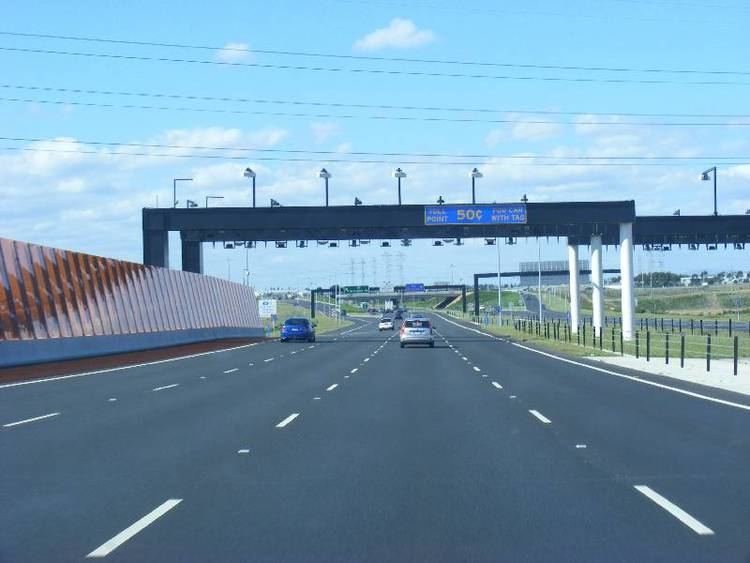 | ||
This article lists and outlines tollways or toll roads in Australia. Tollways are found in the eastern states of New South Wales, Victoria and Queensland. All are currently within the urban limits of Sydney, Melbourne and Brisbane.
Melbourne's CityLink tollway (M1 and M2 sections) carry the highest volume of traffic and also generate the highest revenue of all the tollways (by a substantial amount). This is mainly due to the necessary cross-city and North (Melbourne Airport-bound) corridors. Each respective city uses a different brand of tolling, such as e-TAG in Melbourne, e-Way, e-Toll, Roam and Roam Express in Sydney and go via in Brisbane.
Most tollways operate an open system of toll collection (tolls are collected at a barrier or mainline toll plaza). The Westlink M7 is Closed System where tolls are calculated based on distance from entry/exit points. e-TAG was developed by Transurban (the owner and operator of CityLink in Melbourne in the 1990s in preparation for what would be one of the worlds first 'fully electronic' tollways. Since July 2013 all toll roads in Australia adopted a cashless system. Free-flow tolling is used on some tollways, including Melbourne's EastLink tollway where either an e-TAG or an account (tag-less) can be used via each gantry. Queensland also has motorways that have been converted into tollways or new tollways constructed, which use the electronic method.
According to Professor Mark Hickman, the chair of Transport at the University of Queensland's School of Civil Engineering, toll roads in Australia have not reached expected traffic volumes and do not always relieve congestion in the short-term.
